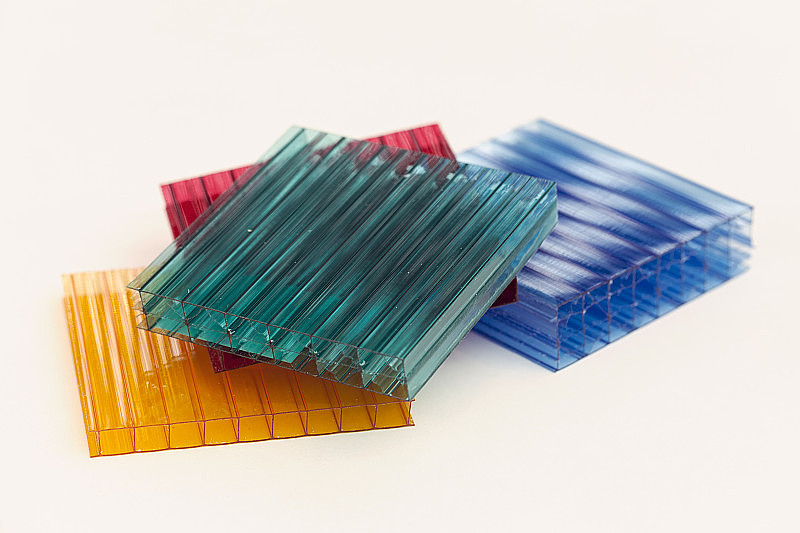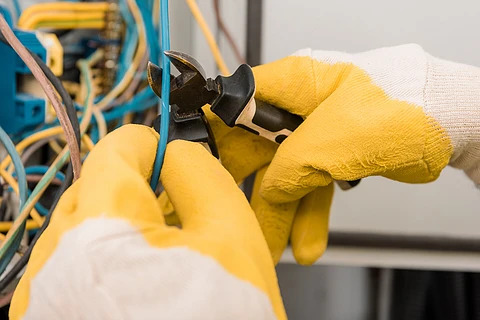Most of the additives used in coatings are surfactants, which achieve the effects of leveling, defoaming, dispersion and improving adhesion by reducing the surface tension at the gas-liquid, liquid-solid or gas-solid interface. Organosilicon compounds have low surface tension and high surface activity. They are widely used in coating systems and are important types of coating additives.
Silicone additives used in coating systems are divided into chemical components, mainly including silanes and silicone oils. Silanes are mainly small molecular compounds. They are mainly used as adhesion promoters, cross-linking agents and dispersants in coatings. The main component of silicone oil additives is modified silicone oil. By adjusting the relative molecular weight of the additive and the modified base Depending on the type and content of the group R and the type of functional groups on the end groups, additives with various properties can be obtained.
1 Silicone additives used as paint leveling agents
The structure of leveling agents for coatings generally consists of two parts: a segment that is compatible with the system and a segment that is incompatible with the system and has a surface tension lower than that of the system. During the film formation process, due to the separation and migration of incompatible segments with low  surface tension, the additives will spontaneously migrate to the surface of the coating system to form a monomolecular film, thereby providing uniform surface tension for the system and eliminating the problems caused by surface tension gradients. Various paint film surface defects caused.
surface tension, the additives will spontaneously migrate to the surface of the coating system to form a monomolecular film, thereby providing uniform surface tension for the system and eliminating the problems caused by surface tension gradients. Various paint film surface defects caused.
Silicone leveling agents are an important category of paint leveling agents. Generally speaking, polydimethylsiloxane with low relative molecular weight (<5000) can be used as leveling agent, but due to its phase The capacitance is poor, the use is more restricted, and the leveling effect is not good enough, so it cannot be applied to high-end systems.Silicone leveling agents currently widely used in coatings are various modified silicone oils, depending on the type of modification, the main ones are Polyether modified silicone oil, polyester modified silicone oil, phenyl modified silicone oil, alkyl modified silicone oil, phenyl alkyl co-modified silicone oil and alkyl-polyether co-modified silicone oil, among which polyether modified silicone oil Because its structure can be adjusted within a wide range, its performance can cover a variety of different requirements, and it can be applied to various systems. It is currently the main variety of silicone leveling agents.
The values of m and n determine the content of the siloxane segment in the structure. The smaller the m/n value, the higher the corresponding silicon content; while the x and y values determine the relative molecular mass and hydrophilicity of the polyether segment. Property (x represents the number of propylene oxide units, which are hydrophobic units, y represents the number of ethylene oxide units, which are hydrophilic units. When x>y, the polyether segment is mainly hydrophobic, when x
If the leveling agent is required to have better feel and anti-crater ability, it usually requires higher silicon content and longer siloxane chain segment length, which can be achieved by increasing the m and n values; when leveling is required When the additive has good defoaming ability, higher silicon content and propylene oxide content are required. The requirements can be met by increasing the values of m, n, x and reducing the y value; when it is necessary to improve the safety of the additive and reduce the gene ration of When there is a risk of paint film defects, a relatively low silicon content is required, which can be achieved by increasing m and reducing the value of n; when it needs to be used in a water-based system, a certain water solubility is required, so a not too high silicon content is required. The silicon content and the higher hydrophilic segment ethylene oxide content can be achieved by increasing the values of m and y.
ration of When there is a risk of paint film defects, a relatively low silicon content is required, which can be achieved by increasing m and reducing the value of n; when it needs to be used in a water-based system, a certain water solubility is required, so a not too high silicon content is required. The silicon content and the higher hydrophilic segment ethylene oxide content can be achieved by increasing the values of m and y.
When the leveling agent needs to be used in high-temperature systems (such as baking paint), due to the low decomposition temperature of polyether, it is easy to decompose during use, causing some surface defects of the paint film, such as poor recoating, shrinkage, etc. It is necessary to choose silicone oil modified with high temperature resistant groups (such as alkyl modified silicone oil, phenyl modified silicone oil, polyester modified silicone oil, etc.). In addition to providing leveling effect, alkyl modified silicone oil also has a good defoaming effect, but its compatibility is not good and it is usually not suitable for use in varnish. Phenyl silicone oil and polyester modified silicone oil have relatively good compatibility and are suitable for use in high-temperature varnish systems, while providing excellent compatibility and high-temperature resistance.
With the development of technology, some leveling agents that combine silicone and acrylate have recently appeared. This type of leveling agent combines the advantages of both and has excellent early-stage leveling and late-stage leveling effects. According to their different chemical structures, they can be divided into two types: acrylate-modified silicone leveling agents (organic silicone as the main chain, acrylate as the side chain) and silicone-modified acrylate. Silicone-modified acrylate In addition to providing leveling effects, leveling agents can also provide stain resistance.
2 Silicone additives used as paint defoamer
As a defoaming agent for coatings, it usually needs to have a lower surface tension than the application system and is incompatible with the application system. Due to its low polarity structure, silicone is incompatible with most coating resin systems, so it is widely used as a raw material for coating defoaming agents.
Usually, polydimethylsiloxane with a relatively large molecular weight (10 000 to 100 000) can be used as a coating defoamer. Currently, this type of defoamer is widely used in heavy anti-corrosion and other systems. In order to improve the defoaming efficiency, some white carbon black can also be added as a synergistic component. In addition, due to the high defoaming efficiency of organic silicon, it has good effects at very low addition amounts. In order to facilitate the addition, the organic silicon defoaming agent is usually made into a lower concentration solution to adapt to actual production. need.
In solvent-based coating systems, in order to enhance the defoaming ability of the coating, fluorocarbon-modified silicone is used. By introducing fluorocarbon segments with lower compatibility and surface tension into the main chain of the organic silicon, the coating and the The compatibility of the system greatly improves the defoaming effect. Generally, the longer the fluorocarbon chain introduced, the better the defoaming effect. This type of defoaming agent is usually a high-end variety among silicone defoaming agents.
In water-based coating systems, due to the high polarity of water-based resins, conventional polydimethylsiloxane has limited compatibility with the system and is difficult to be used directly as a defoaming agent. Polydimethylsiloxane often needs to be modified with polyethers, especially for applications in high-gloss systems. Generally, the higher the degree of polyether modification, the better the compatibility, but the defoaming effect will also decrease. Generally, it is necessary to select an appropriate modification ratio according to the difficulty of defoaming of the system to meet the defoaming ability. Under the conditions, the lower the silicon content, the better.
Water-based silicone defoaming agents are divided into two categories: concentrated type and emulsion type according to their different states. Concentrated type defoaming agents have strong foam suppression ability, but are not easy to disperse and require strong shearing during use; emulsion type defoaming agents The agent is obtained by emulsifying concentrated defoamer. Through emulsification, the convenience of use is greatly improved, and it can be introduced into the system with only simple stirring.
3 Silicone substrate wetting agent
In water-based systems, because the surface tension of water is too large, it is difficult to quickly wet the substrate (especially low surface tension substrates). Therefore, in water-based coating systems, the use of substrate wetting agents is particularly important. Silicone substrate wetting agents are widely used in water-based coating systems due to their broad applicability.
The substrate wetting agent is actually a special type of polyether-modified silicone oil, whose relative molecular weight is usually very small. Since the rapid wetting of the substrate is a dynamic process, and according to the principles of physical chemistry, the principle of wetting agent is to quickly migrate to the surface of the system and reduce the surface tension of the syste m, thereby achieving the effect of substrate wetting. According to the perspective of molecular kinetic theory, the migration speed of molecules depends to a large extent on the relative molecular mass. The smaller the relative molecular mass, the faster the migration speed. Therefore, polyether-modified silicone oil with a smaller relative molecular weight is often used as a substrate wetting agent in water-based systems.
m, thereby achieving the effect of substrate wetting. According to the perspective of molecular kinetic theory, the migration speed of molecules depends to a large extent on the relative molecular mass. The smaller the relative molecular mass, the faster the migration speed. Therefore, polyether-modified silicone oil with a smaller relative molecular weight is often used as a substrate wetting agent in water-based systems.
Further research found that when polyether-modified silicone oil used as a substrate wetting agent is used in a water-based system, the silicone chain segments in it can be fully stretched and a large amount of -CH3 can be stretched outward, thereby greatly reducing the surface tension of the system. Generally, polyether-modified silicone oil with relative molecular weight can only reduce the surface tension to 25 to 26 N/m in a water-based system, while small-molecule substrate wetting agents can usually reduce the surface tension to less than 22 N/m, with a minimum of It can reach 20~21 N/m. With such low surface tension, water-based coatings added with substrate wetting agents can wet most low surface tension substrates, even polytetrafluoroethylene substrates. At the same time, because the base material wetting agent can reduce the surface tension of the water-based system to a very low level, the base material wetting agent can give the system good anti-cratering properties and an atomization effect during spray construction.
Since the relative molecular weight of the substrate wetting agent is small and its silicone chain segment is very short, it cannot impart good slippery to the surface of the paint film (slipness usually comes from longer silicone chain segments). When there are requirements for the smoothness of the paint film, the base material wetting agent is usually used in conjunction with a high relative molecular weight silicone leveling agent. This is also the difference between the base material wetting agent and ordinary silicone leveling agents. .
4 Silicone additives used as wear-resistant additives
For systems that require wear resistance, in addition to increasing the cross-linking density from the resin perspective, adding additives is also a common method, and the use of silicone additives is a commonly used method. Common ones include ultra-high molecular weight silicone microspheres, ultra-high molecular weight silicone emulsions, and silicone nano-modifiers.
Ultra-high molecular weight wear-resistant silicone microspheres are a dispersion of high molecular weight polysiloxane with a slightly cross-linked structure inside. Microscopically, they are in the shape of microspheres. After being added to the system, they will eventually be oriented and arranged on the surface of the paint film. Forms a polysiloxane film that provides the system with excellent slip and surface wear resistance.
In water-based coating systems, in addition to silicone microspheres, ultra-high molecular weight silicone emulsions are also commonly used as wear-resistant additives. They are usually obtained by polymerizing silicone emulsions. Their internal phase viscosity is extremely high and their relative molecular weight is very high. It can reach millions. After being added to the system and forming a film, a thin layer of ultra-high molecular weight organic silicon can be formed on the surface, thereby improving the wear resistance of the paint film.
Recently, someone has developed a type of silicone wear-resistant additive with a special structure. Its chemical composition is cage polysilsesquioxane, which is an oligomeric cage organosilicon compound, in which the R group can be any A kind of reactive group, such as hydroxyl group, epoxy group, acrylic double bond, etc., is added to the system. Its reactive group can participate in the resin curing reaction, thus introducing a structure similar to inorganic siloxane into the system, which can At the same time, the flexibility and wear resistance of the system are improved.
5 Silicone additives used for coating resin modification
Silicone materials usually have some special properties, such as surface smoothness, wear resistance, weather resistance, low temperature flexibility, etc. By usin g some silicone materials with reactive functional groups as modification additives, silicone can be introduced into the resin system. chain segments, thus introducing the excellent properties of silicone materials into the coating system.
g some silicone materials with reactive functional groups as modification additives, silicone can be introduced into the resin system. chain segments, thus introducing the excellent properties of silicone materials into the coating system.
Silicone materials used for resin modification have various functional groups, usually silicone polymers with reactive groups at both ends. Silicone materials with carbon hydroxyl groups usually have good reactivity with polyurethane materials and can be used to modify polyester or polyurethane resins; silicone materials with epoxy groups can be used to modify epoxy resins; Silicone materials with acrylate double bonds at both ends can be used to modify photocurable resins. Silicone materials with acrylate double bonds can also be used in the synthesis reaction of silicone modified emulsions; organic silicone materials with amino groups Silicone materials can be used for the synthesis of silicone-modified polyimide resins for some high-end applications; silicone materials with carboxyl groups can be used for the modification of powder coating resins and participate in reactions.
6 Silicone additives used as stain resistance additives
Coating systems used in certain special fields usually have surface stain resistance requirements. Most antifouling additives are silicone additives with various special structures, as shown in formula (5). They usually contain some silicone groups R that can react with the system, and also have some silicone chains that can stretch on the surface. Segments, it is these stretched silicone segments that provide excellent stain resistance.
When R is a hydroxyl group, it can be used in polyurethane systems and amino baking paint systems. When the hydroxyl content is low, it is suitable for solvent-based systems. When the hydroxyl content is high, it is suitable for water-based systems. When R is an acrylate double bond, it can be used for Light curing system; when the R group is epoxy, it can be used in epoxy systems.
7 Silicone additives used as dispersants for pigments and fillers
In order to disperse the pigments and fillers evenly and prevent settling, dispersants are indispensable. From a structural point of view, dispersants contain pigment-loving groups and solvating segments. After rational structural design of organosilicon compounds, compounds that can be used as dispersants in coating systems can be obtained. Common silane coupling agents can be used as dispersants for fillers. Sometimes in order to meet higher requirements, some special structures can be designed to achieve better results.
Since usually the surface of pigments and fillers (especially inorganic pigments and fillers) absorbs moisture in the air or their own structure, they all contain certain hydroxyl groups. When organic silicon compounds are added to the water-based coating system, the organic silane in them will hydrolyze to produce the corresponding silicon. Hydroxyl groups, the generated silicone hydroxyl groups can further condense with the hydroxyl groups on the surface of the pigment, thereby firmly connecting to the surface of the pigment, creating a molecular adsorption layer on the surface of the pigment and filler, plus the entropy provided by the hydrophilic solvation segments it contains. The stabilizing effect can provide stabilization for the dispersion of pigments and fillers in aqueous systems, so it is particularly suitable for some inorganic pigments and fillers that are difficult to disperse, especially nanoscale inorganic pigments and fillers (such as nano-iron oxide, nano-zinc oxide, nano-silica). ) dispersion.
8 Silicone additives used as adhesion promoters
Silane adhesion promoters have been widely used in solvent-based coating systems whose substrates are glass, ceramics, metallic zinc, metallic iron and some plastic systems.
plastic systems.
The alkoxy groups in the silane react with a small amount of water in the system to generate silicone hydroxyl groups, which react with the hydroxyl groups on the surface of the substrate to form a strong adsorption layer, and the R groups contained in the silane contain reactive groups ( For different resin systems (including amino group, epoxy group, methacryloyl group, etc.), it can produce chemical bond cross-linking with the resin system during the cross-linking process, providing a strong bridging effect between the resin and the substrate, thereby greatly Improve adhesion.
Like solvent-based coating systems, in water-based coating systems, silanes can still be used as adhesion promoters when applied to glass, ceramics, and some metal and plastic substrates, but unlike solvent-based systems, because water-based systems Using water as the dispersion medium, silane adhesion promoters that are usually suitable for solvent-based systems will fail quickly due to too fast hydrolysis speed when added to the water-based system. Therefore, they can only be added at the construction site when used.
According to the characteristics of water-based coating systems, silanes suitable for water-based coating systems have been developed. By adjusting the size of the R group in the silane structure and the steric hindrance effect of the R group, the hydrolysis rate of the silane is affected, so that the hydrolysis cycle of the silane can be synchronized with the use cycle of the water-based paint, and the storage stability of the water-based paint can be improved.
9 Silicone additives used as external linking agents for water-based coatings
Water-based coatings, especially single-component water-based polyurethane systems, usually do not perform as well as cross-linked two-component polyurethane systems because they are not cross-linked. In order to improve the performance of single-component water-based polyurethane, post-crosslinking agents, such as aziridine, are often added to the water-based polyurethane coating formula, and aziridine is used to react with the carboxyl groups in the water-based polyurethane to provide a certain degree of cross-linking. This greatly improves the final properties of the coating, such as water resistance and solvent resistance.
However, due to the considerable toxicity of aziridine, its use is limited. Secondly, the cross-linking speed of aziridine is too fast and can only be used as a two-component system. Thirdly, the aziridine cross-linking agent cannot improve the water resistance. Polyurethane adhesion to substrate.
For this purpose, various new types of cross-linking agents with different structures have been developed, among which silicone cross-linking agents are one of them.
Commonly used silicone cross-linking agents generally contain epoxy groups. During the drying process of the paint film, the epoxy groups in the cross-linking agent can undergo a ring-opening reaction with the carboxyl groups in the water-based polyurethane to form chemical bonds. In addition, through its own cross-linking reaction to obtain a three-dimensional cross-linked structure, forming an organic-inorganic hybrid system, thus improving the water resistance and chemical resistance of the paint film.
10 Conclusion
Changes in the silicon content and relative molecular weight of organic silicon molecules can change the compatibility range of additives and coating systems, thus affecting the dispersion state of additives in the system. According to the performance requirements such as leveling, feel, recoating, and wetting of different coating systems, only by rationally screening the types of silicone additives can we obtain the ideal coating effect. The introduction of more special functional groups such as organic fluorine structures and the design of unique molecular structures such as star shapes will add functional additive products to more application fields.



